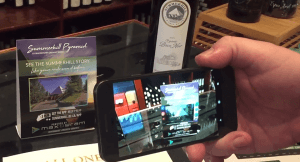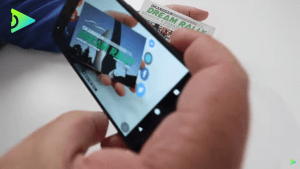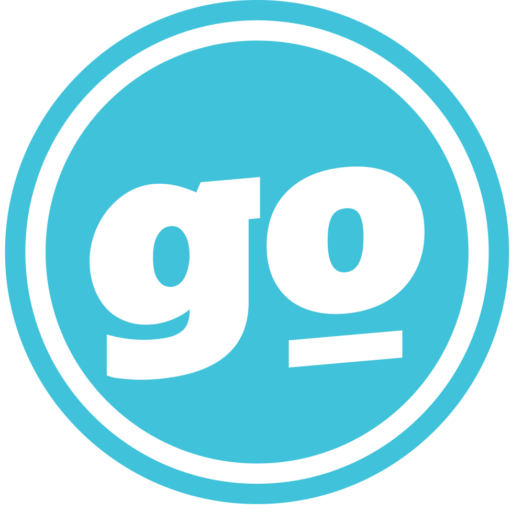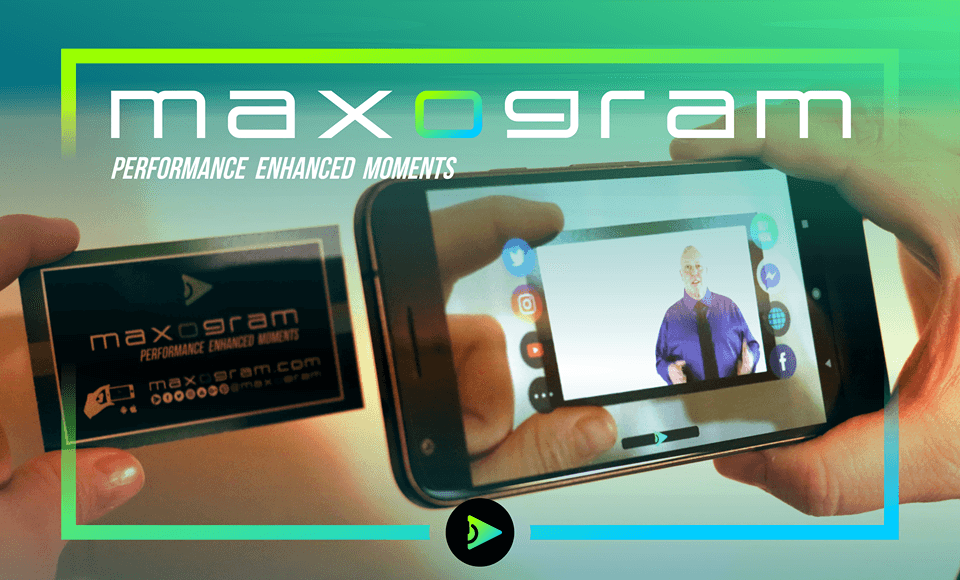Canada’s Silicon Valley has produced another landmark technology company.
Technology is bridled only by our ability to harness potential. The field is wide open. The possibilities are virtually limitless. Matthew Jensen and Calum Hughes have their own ideas about what can and cannot be done. Enter Maxogram. The next generation of scanable technology… The bridging of mediums provides an entirely impressive, unique and effective way of conveying the message: content previously delivered in two-dimensions becomes a dynamic, interactive, moving story that carries meaning in profound ways that is not achievable in traditional mediums.
Maxogram has taken scannable marketing and multimedia advertising to the next level. Co-founder, Matthew Jensen took time out from his busy theatre of operations to speak to the vision, direction and, ultimately, what the new tech app can do for clients.
Gonzo: When did the idea for Maxogram technology occur to you? Was it an evolution over time, or more of a spontaneous epiphany? Or was it created to fill a gap in current marketing technology?
Matt: Originally I got the idea for the foundation of it in October 2012, when I saw an early demonstration of what might be possible using a smartphone camera for image recognition. As I began to explore a little deeper and looked at which companies were doing this, and what, specifically, they were doing with it, an idea of how it could be even better and actually be useful began to take shape. Now, having been steeped in this technology for so many years, I see new and innovative ways to use it every day.

Gonzo: Why does Kelowna make sense for home base? The city is fast becoming the Silicon Valley of Canada. This has to be a tremendous advantage to Maxogram, yes?
Matt: I have definitely used the notion of Kelowna being a tech hotspot in conversation many times. I can’t say whether that fact alone has proven advantageous for Maxogram, but because I love Kelowna, it does add a little romance to the story!
Gonzo: Who are some of the clients and which industry / commercial centres are you seeing clients come to you from?
Matt: This is an interesting thing about Maxogram – every businessperson or entrepreneur that we speak with quickly finds a way that they can make the technology work for them. To date, the use cases and interested industries have been very diverse. From food and beverage establishments and wineries to real estate and musicians. Someone recently asked one of our sales associates, “What is Maxogram?” and the sales associate said, “What would you like it to be?” This is really in line with the spirit of what we’ve created. There is something in it for everybody.

Gonzo: How are these clients using Maxogram?
Matt: We have musicians using Maxogram to showcase and promote their latest tunes, and connect with fans new and old through social media. We have a Maxogram-powered Self-Guided Tour and other things at Summerhill Pyramid Winery. In fact, the proprietor of Summerhill, Stephen Cipes, also recently published his first book, “All One Era”, and it features several Maxograms throughout, which, because Maxogram starts with video, allows the reader to not only hear about what is being described in the book, but actually see it – right there on the printed page.
Gonzo: What advantages does this tech. have over traditional mediums?
Matt: This is where Maxogram really shines! Let’s take the traditional TV commercial for example. Let’s say you just caught a great commercial for a new car that you’re interested in. At the end of the advertisement, they display their website and facebook/twitter/instagram @username. Your natural instinct is to think, “I will have to check that out later.” Invariably, the vast majority of people don’t. That’s the nature of mass media. It’s like a fishing troller’s net: drop a huge net in the ocean and you’re sure to catch something! Now, using this same example, imagine if at the end of the TV ad you could walk up to your TV and touch the Facebook icon and “Like” the facebook page of the advertiser, or follow them on Twitter or Instagram, or their website – or, for that matter, even call their toll free number with a touch. Well, with Maxogram, you can do just that. If you’re seeing something that you are interested in, you can – with a single touch – connect with them instantly via the ways that they have made available. Consider the same with a magazine ad. Famous for the “call to action”, such as “Visit Us Online at …”, well, with Maxogram bringing that printed magazine ad to life, not only can you have that call to action, but people can actually do it with a single touch, right then and there. They can do that and more than 40 other optional actions that we currently have available in our system.
Gonzo: Any success stories as yet?
Matt: There are several, but one great story that I love to share has to do with country singer, Lauren Mayell, out of Calgary. Her manager worked with us to create a Maxogram promo card, which is essentially just a business card size print, with a simple call to action: View this card with the Maxogram app. He brought about 300 of these cards into a venue that she was performing and competing at and placed a small batch of these cards on every table before spectators started arriving. At that time, we had a rudimentary method of being able to see how many people were viewing any given Maxogram. About an hour into the event, the view count was far higher than I expected – it was in the hundreds.

I reached out to the manager at that time, who stepped outside and called me to say he couldn’t believe his eyes. People throughout the venue were gathering in groups around the tables all trying it themselves. It was definitely a win for us, a win for Lauren – and she won that particular competition to boot!

Gonzo: What has the response been like so far, from clients and test groups?
Matt: Honestly, to say that the response has been overwhelming, would be an understatement. Although there are varying degrees of time between when an individual or organization sees Maxogram and when they commit to using it, we have 100% positive response and a high 90% range of expression of interest to move forward. There are trailblazers and vanguards who want to get it right away and be first, and there are those who like it, but want to see others adopting it first, which I think is to be expected.
Gonzo: Where do you see Maxogram in the future? Will the technology evolve? Will the company expand into other mediums and invest in research and development?
Matt: At it’s core, Maxogram has been built using a marketing-first approach. Not that we expect it necessarily to always and only be used for marketing, but in doing so, I believe, this is how we have “struck gold” so to speak, and created something that businesses and consumers alike have both emphatically expressed a desire for. To that end, I see Maxogram becoming a part of daily life – a utility that people come to rely on, to allow them to instantly dig deeper into what they are seeing, whether it’s information in a book or magazine, or a sign on a wall or a product label. Having that, plus providing the ability to communicate in real-time using two-way communication methods that go beyond the “Follow” on the likes of Twitter and Instagram, such as SMS and Facebook Messenger, as this really solves a real and enduring challenge that a lot of businesses face today, which is customer service.
Gonzo: What are some of the ways you foresee Maxogram Technology being used that aren’t necessarily being used already?
Matt: I love spending a little time each day dreaming about this. Today it was a use case in the Alberta Oil and Gas sector, yesterday it was a TV promo. It’s always exciting to see what tomorrow brings. I can foresee a future where user contributions power a lot of the “how do I do this thing I’m looking at”? Unfortunately, I can’t tell you exactly what I foresee us using the technology for, because I have some ideas of my own that are best kept under wraps until they can be deployed! But I can tell you that there are some wildly interesting concepts that I hope to unveil in the not too distant future.
The Founders
Matthew Jensen has always had a passion for technology and creativity. His journey officially began in 1996, with graphic design, which led to website development, then brand development and social media. From there he became a consultant and was hired extensively in the broad marketing arena.
Co-founder, Calum Hughes, is currently working toward a PhD at Royal Roads University, and worked extensively in the medical profession, with more than 15 years in the medical field, including Cardiovascular and Cerebrovascular Rehabilitation, was Director of a 140 bed Acute Care Hospital, Adjunct Professor for the University of British Columbia in the areas of Health Economics, Health Evaluation and Canadian Health Systems; he worked as QA Healthcare Consultant on large projects within the health sector for government organizations, as well as the pharmaceutical industry.
Christine Shaffer is the programmer behind Maxogram. She has written and tweaked the platform to where it is today, with more than a little sound-boarding bouncing off of Matthew’s brain. A quiet person by nature, numbers have always made more sense to Christine than almost anything else. She relishes in a good problem, or learning about any random topic. This is why Maxogram, a learning venture in marketing, business, technology, and problem-solving, is the perfect fit. Most of the time you can find Christine lost in code, but she’s always willing to make time for family, friends, animals, and a good old-fashioned debate.
The Best Demonstrations of Maxogram
https://maxogram.com/ideas/flyer
https://maxogram.com/ideas/book/
https://maxogram.com/ideas/table-talker/







